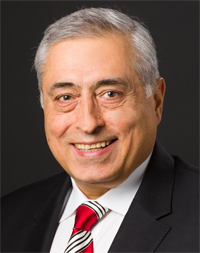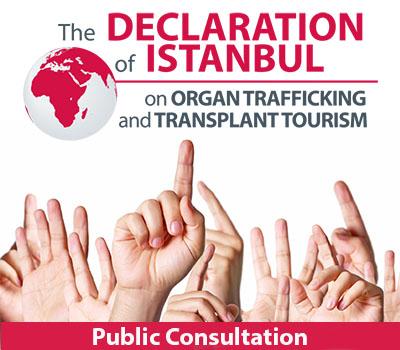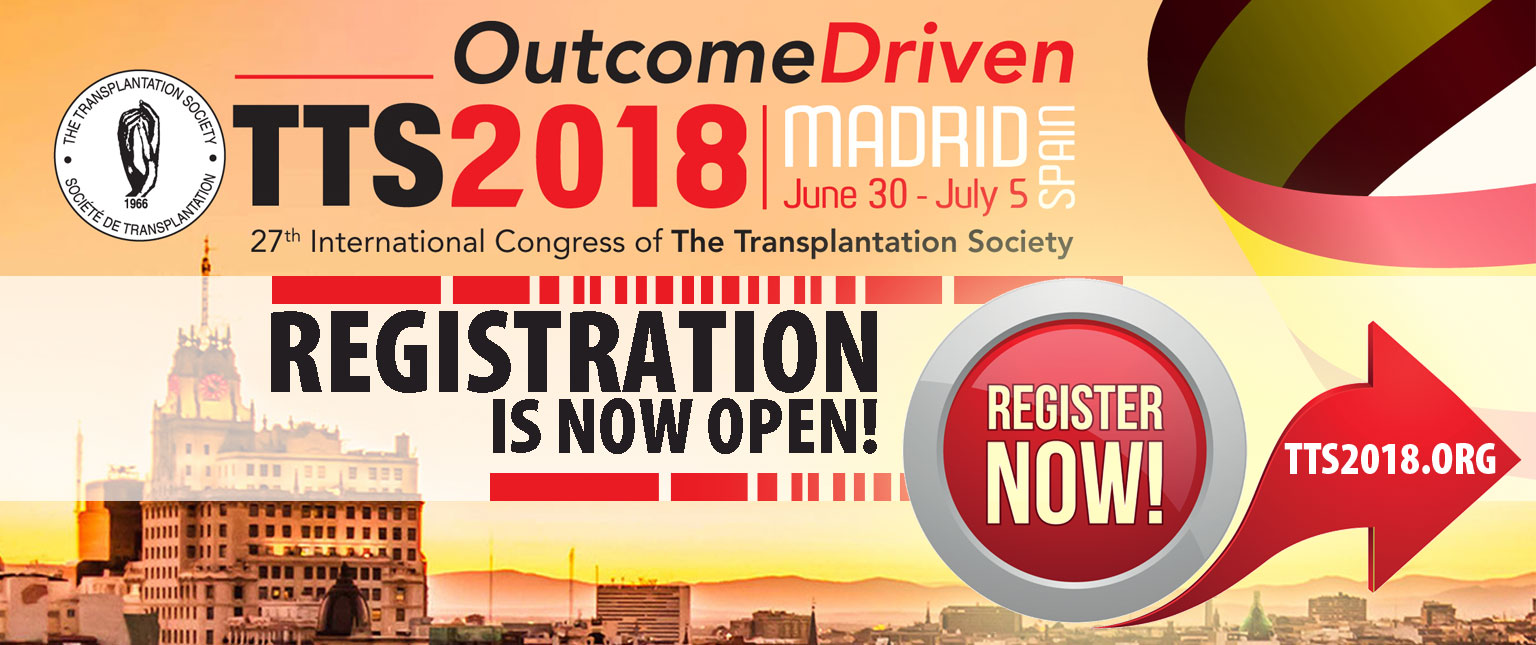
Paul Teraski honored by the national inventors hall of fame
The Class of 2018 will be honored at "The Greatest Celebration of American Innovation," a two-day event held in Washington D.C.. In partnership with the United States Patent and Trademark Office (USPTO), NIHF will honor these Inductees May 2-3 at one of the innovation industry's most highly anticipated events — "The Greatest Celebration of American Innovation."TTS EDUCATION COMMITTEE WEBINAR SERIES
"TRENDS AND CHALLENGES IN LIVER TRANSPLANTATION"
WEDNESDAY, MARCH 28, 2018 - 2PM EST (Montreal time)
Challenging Problems in Pediatric Liver Transplantation:
Long Term Allograft Attrition
 |
Organizer/Moderator: Professor Sukru Emre, MD Professor of Surgery (Transplant) and of Pediatrics, Yale University, USA |
 |
Discussant: Carlos O. Esquivel, MD, PhD Arnold and Barbara Silverman Professor in Pediatric Transplantation, Stanford University School of Medicine, Stanford, CA, USA |
 |
Discussant: Simon P. Horslen, MB ChB Director of the Hepatobiliary and Intestinal Failure programs Medical Director for Solid Organ Transplantation, Seattle Childrens Hospital, USA |

The full program is now available. Visit our website for full details and click on "Detailed Program" to read abstracts, look up speakers and more!
Transplantation Journal - Featured Article
Submitted by Dr Andrea Schlegel, Editorial Fellow, Transplantation.
A Comparison of HLA Molecular Mismatch Methods to Determine HLA Immunogenicity [published online February 13, 2018]
Wiebe C, Kosmoliaptsis V, Pochinco D, Taylor C, Nickerson P..
Transplantation. doi: 10.1097/TP.0000000000002117.
The authors present the first comparison of available scoring systems to assess HLA donor-recipient mismatches and their correlation with the development of de novo donor-specific antibody (dnDSA) in kidney transplant recipients on active immunosuppression. The authors determined HLA-DR and DQ molecular mismatches at the molecular level comparing 3 different methods: an eplet analysis that identifies small patches of surface exposed mismatched amino acids, an amino acid mismatch scoring physicochemical properties of all mismatched amino acid sequence polymorphisms, and an electrostatic mismatch that assesses the HLA tertiary structure for unique electrostatic potential profiles. The authors tested those methods in 596 renal transplant recipients and correlated their results with the development of HLA-DR/DQ dnDSA´s. Authors demonstrate a good correlation among the 3 scoring systems (R2=0.85-0.96). Importantly, HLA-DR and DQ free survival after kidney transplantation equally correlated with Eplet, amino acid and electrostatic mismatches (p<0.0001). Notably, all 3 methods predicted the development of dnDSA in a multivariate analysis after adjustment for recipient age, immunosuppression, and nonadherence, thus providing precise methods of alloimmune risk assessment.
TTS-IRTA WEBINAR WEDNESDAY, MARCH 14, 2018 - 12 Noon EST (Montreal Time)
Click HERE FOR MORE INFORMATION AND TO SIGNUP
|
|
UPDATE OF THE INTERNATIONAL INTESTINAL TRANSPLANT REGISTRY AND INTESTINAL TRANSPLANT OUTCOMESSpeaker: Matthew Everly, PharmD, BCPS, FAST, Director, Terasaki Research Institute, Los Angeles, CA, USA |
|
|
|
TTS 2018 - Challenging Cases Competition
Are you involved in managing challenging transplant cases? If yes, the Scientific Program Committee of the TTS 2018 congress in Madrid is inviting you to submit the most challenging case you were involved with.
In the News
Pakistan - SIUT’s transplant operating theatre complex opened
March 3 - The Sindh Institute of Urology and Transplantation (SIUT) on Friday opened its state-of-the-art Bashir Dawood Transplant Operating Theatre Complex equipped to carry out up to four transplant surgeries simultaneously.
Johns Hopkins doctors successfully transplant hepatitis C-infected kidneys into virus-free patients
March 6 - In a small study, doctors at Johns Hopkins have successfully transplanted 10 hepatitis C-infected kidneys into patients without hepatitis C and prevented the patients from becoming infected by hepatitis C. The success of these transplants could mean more organs being available for the nearly 100,000 people in the U.S. currently waiting for a kidney transplant.
Scientists Identify "Elusive" Human Pancreatic Progenitor Cells
February 28 - Scientists at the Diabetes Research Institute (DRI), University of Miami, have identified and characterized a population of progenitor cells located in defined areas of the human pancreas, which can be stimulated to develop into glucose-responsive beta cells.
First Liver Transplant Surgery Performed in Patient With CRC Metastases
February 28 - To improve patient outcomes, physicianresearchers in Cleveland Clinic’s Liver Cancer Program have developed a new transplantation protocol for treating liver metastases from CRC.
New Stem Cell Found in Lung, May Offer Target for Regenerative Medicine
March 1 - Newly identified stem cells in the lung that multiply rapidly after a pulmonary injury may offer an opportunity for innovative future treatments that harness the body's ability to regenerate.
Researchers move one step closer towards functioning kidney tissue from stem cells
March 2 - Researchers from the Murdoch Children's Research Institute (MCRI), University of Melbourne and Leiden University Medical Centre (LUMC) in The Netherlands have made an important step towards making human kidneys from stem cells that they one day hope can be used to treat kidney disease.
Drug saves lives of those on liver transplant list, in world-first treatment
March 3 - In a world-first, Melbourne's Austin Health has reapplied how the drug Terlipressin is given to patients waiting for a liver transplant, reducing the length of hospital stays and improving their post-surgery recovery.
Study to look at extending heart transplantation donor pool
March 6 - Surgeons and scientists at Baylor College of Medicine and the Texas Heart Institute will study the utility of previously unused organs to increase the number of heart transplantations, potentially making transplant possible for thousands of patients who die while waiting for an acceptable heart to become available.
22-year-old's 3-D scanner can diagnose heart diseases in 90 seconds
March 8 - The company built a 3-D heart scanner that it hopes will change how ERs treat chest pain
Scientists develop pigs for transplants
Mar. 8, 2018 - The Japan News -The Yomiuri Shimbun A team of scientists says it has created a pig that can be used in transplantations in humans. According to the team, which includes researchers from Meiji University and Kyoto Prefectural University, the animal is the first to be developed for transplantation based on national guidelines ..
NIH Blog: Snapshots of Life: Finding Where HIV Hides
Researchers have learned a tremendous amount about how the human immunodeficiency virus (HIV), which causes AIDS, infects immune cells. Much of that information comes from studying immune cells in the bloodstream of HIV-positive people. Less detailed is the picture of how HIV interacts with immune cells inside the lymph nodes, where the virus can hide. In this image of lymph tissue taken from the neck of a person with uncontrolled HIV infection, you can see areas where HIV is replicating (red) amid a sea of immune cells (blue dots). Areas of greatest HIV replication are associated with a high density of a subtype of human CD4 T-cells (yellow circles) that have been found to be especially susceptible to HIV infection.
2nd Opinion Leaders Meeting on Stem Cell Derived Beta Cells | May 7-8, 2018 | Boston, MA, USA
Contact
+1-514-874-1717
This email address is being protected from spambots. You need JavaScript enabled to view it.
Address
The Transplantation Society
International Headquarters
505 Boulevard René-Lévesque Ouest
Suite 1401
Montréal, QC, H2Z 1Y7
Canada









